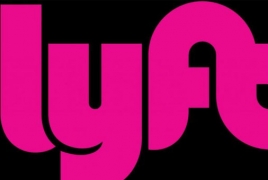
Lyft Inc.’s business has been booming as its primary competitor, Uber Technologies Inc., has faced an executive exodus and a string of self-inflicted scandals, Bloomberg reports.
Total revenue generated by Lyft drivers, or the company’s gross bookings, grew about 25 percent to more than $1 billion in the second quarter from more than $800 million in the previous period, according to people familiar with the matter. That’s a faster rate than Uber, which told investors earlier this month that it expected gross bookings would increase in the “mid-teens” for the quarter.
Lyft’s continued growth is a sign the company has seized on its competitors missteps. In a reversal, Uber has played catch up to Lyft lately, finally embracing in-application tipping after years of resisting. In June, Uber started a campaign to win over drivers, many of whom say they prefer to work for Lyft.
It’s not just drivers that have defected to Lyft: Uber saw more than 500,000 people delete the ride-hailing app in late January and early February after the company was accused of attempting to subvert a driver strike. That public unrest, rooted in Uber’s decision to join an advisory council to President Donald Trump, was the first of a number of incidents that humbled the company and ultimately forced Uber Chief Executive Officer Travis Kalanick to resign.
Lyft has generally avoided much public gloating about its competitor’s fumbles, while at the same time seizing on its competitors vulnerability. Lyft made a $1 million donation to the American Civil Liberties Union just as Uber was under fire for its Trump ties.
Despite Uber’s problems at its San Francisco headquarters, the company’s business has continued to grow. Uber’s gross bookings surpassed $8.25 billion in the second quarter of this year based on what the company told investors during a conference call earlier this month. Lyft operates in the U.S. while Uber, in conjunction with partners, is a global business.
While losses for both companies remain significant, investors have continued to put billions into the ride-hailing companies. Uber lost $708 million in the first three months of the year. Lyft expected to lose about $130 million in the first quarter, according to financial documents prepared before the end of that period that have been reported by Bloomberg. Neither company’s second quarter losses have become public, though Uber told its investors that its losses were declining.
“Lyft has achieved incredible growth this year and enters the second half of 2017 in a very strong position,” Chief Financial Officer Brian Roberts said in a statement. “With Lyft available to nearly 80 percent of the U.S. population, we are well positioned to continue our growth in 2017 and beyond.”
Uber has begun to publicly disclose its financials to reporters, after first sharing its 2016 financials with Bloomberg in April. Lyft has been far more secretive about its results.
Gross bookings provide a crude estimate of the value of a ride-hailing company’s business. Lyft and Uber aim to take anywhere from a 20 percent to 30 percent cut of gross bookings, meaning that $1 billion in bookings for Lyft this quarter could translate to anywhere between $200 million to $300 million in revenue.
Rides also grew significantly. Lyft passengers took about as many rides in the first half of this year as they did in all of 2016, said the people, who asked not to be identified because the numbers are private. In June, Lyft began facilitating 1 million rides a day.

